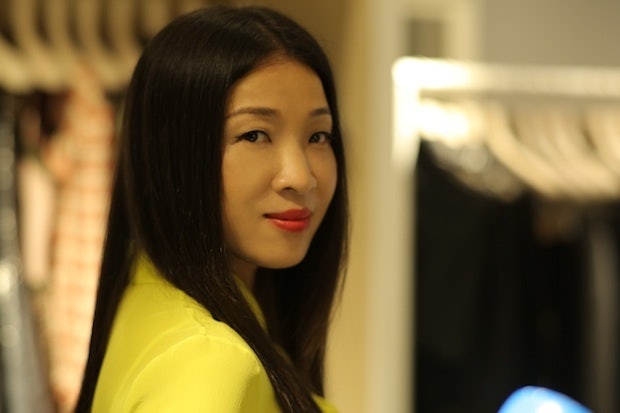
Helen Lee. (Erica Ji)
Ten years ago, Chinese fashion designer Helen Lee founded insh, a brand aimed at expressing the spirit of Shanghai, and was invited to attend the first Shanghai Fashion Week. Today, her namesake brand Helen Lee, which delivers a modern metropolis style, has transformed into a Shanghai Fashion Week focal point. This past decade has been an important one for Lee, who has been not only a participant in and witness to, but also a leader of China’s original fashion design scene.
Jing Daily recently visited Lee’s studio at Tianzifang, Shanghai, and had a talk on her brand positioning, team building, overseas expansion, capital operation, and development goals.
A local independent designer with both a flair for the creative and a mind for business, Lee was a well-composed, friendly person who frequently talked about the importance of being patient and down-to-earth in the industry, traits which were reflected in her interactions with her team. On the day of interview, the jacquard fabrics for her Fall/Winter 2013 “Pointing at the Moon” 10th anniversary special collection line just arrived, and employees were carefully inspecting the prints and manually cutting the loose threads. While this was going on, Lee was working on a half-finished embroidered material, which she had scoured the country for and finally came across in Yunnan.
Your labels insh and Helen Lee#
each have a strong sense of brand DNA. What inspired you to create both of these lines?#
I founded insh because of my interest in design, and as I operated the brand, it started to become a serious business. I founded insh solely because of my passion for fashion and my goal to build a local designer brand in China. While most of the designers at that time were still only thinking about creating stunning designs, I was one of the pioneers who had been conceiving a plan to build a brand. When I was trying to develop a brand strategy plan at the beginning, I didn’t hire anyone to help me because I simply could not afford it.
My idea was to create a local brand which reflects Shanghai’s culture, so I consulted brands like Shanghai Tang for inspirations, but its brand positioning was more upscale and it was intended for more mature age groups. I wanted something different, so I found my brand positioning in a modern style for a younger client base, with Chinese features but also a wide range of other cultural elements. Overall, I wanted to target the younger generation and produce the everyday basics: t-shirts and jeans. It was an attainable goal, given the limited funds.
We later developed other everyday products such as purses and bags, and insh gradually became a brand which expresses Shanghai’s culture, lifestyles, and trends through apparel and accessories. Soon, the client base grew and we started to respond to their growing need to dress for different occasions, such as work and dinner parties; therefore, Helen Lee was born. A Helen Lee icon is an urban, modern young woman whose outfit is an international fusion.
So far, Helen Lee has produced five seasons, which roughly equals two and a half years. Before that, we actually took a year to prepare, including market research and supply chain management. We use self-designed unique fabrics—Helen Lee colors and Helen Lee prints—to express our concepts. Since our distinctive brand DNA has been established, all future designs will be created around the DNA.
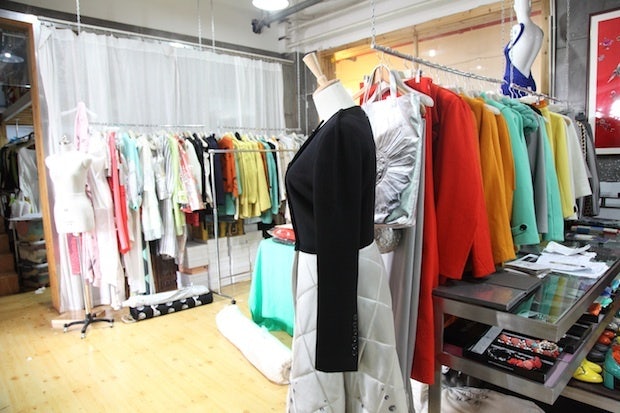
Inside Helen Lee's studio. (Erica Ji)
Do the unique materials you use result in higher material and development costs? If so, how do you price your products? In addition, factories are usually unwilling to accept orders from independent designers because of the small quantity. How did you solve this problem?#
The media and customers consider our products creative, functional, and reasonably priced. How do we sell at a reasonable price? Everyone struggles in the early stages of entrepreneurship, and I was no exception. I started out with no funds, with simply the passion to create art. To realize my idea, I invested a lot of time on it. Many find it troublesome and give up halfway. The key to a reasonable price is to persistently look for ways to bring down the costs. Although our quantity is larger than that of other independent designers' brands, we still get rejections from factories sometimes. Under such circumstances, negotiation skills are crucial. Many times they are touched by my sincerity and therefore want to provide their support.
Can you talk a little about your team's role in your business success of operating two brands?#
Currently, we only have seven team members. It is sometimes hard to believe such a large-scale business is only operated by a team of seven: three in the design section, three in the production section, and me overseeing everything.
I am strict in my requirements for new hires. Firstly, she must have a strong interest in the fashion industry. I’ve hired many employees, but those who ultimately stay hold the values that we are a big family and we are working toward our dreams together. Secondly, she has to be determined and believe in what she does. I have to be their role model and make everybody believe in me. I try to bring positive energy to the workplace, and make them feel we are moving forward. When an employee who is interested in the industry regards you as a person worth respecting, she will stick around.
Communication is key in maintaining relationships among team members. In addition, work assignments and responsibilities need to be clear, and bring the best out of each employee according to her skills. Management is complicated. A philosophy that is healthy and positive rather than exploitative and pompous will reflect on the brand and products.
We’ve faced a lot of challenges along the way, but we have been thinking positively. I tell my team members that we can not only achieve what every other brand has achieved but also achieve what they haven’t achieved.
You are reportedly expanding to Singapore. Could you please talk a little about your overseas expansion plan?#
We were invited to be a part of an exhibit in May. During the trip, we visited local boutiques and showed them our designs. They like them a lot. Recently we also received orders from Singapore. At the same time, we are seeking to enter the Australian market. We have an agent there who specializes in sales development. I will visit New York in September for a possible expansion next year.
I am a person who has to plan everything in advance. This is why I, a self-made entrepreneur, can make it to where I am today. Currently, we only plan to expand Helen Lee to countries overseas, and will choose boutiques as our main sales channel.

The exterior of the studio. (Erica Ji)
Fashion designers need funds to successfully run a brand. You mentioned in an interview that you are careful when managing investments from corporations. Could you talk a little about that?#
Since I founded insh, there have been corporations trying to invest in my work, but my ambition is bigger. One cannot measure a brand’s growth by its funds. I think I need to build the brands to their best before I accept external investment. Moreover, I don’t think we should accept “any” investment; what we should always focus on is whether the funds can help us arrive at where we want to be.
We set the bar high for ourselves. Currently, we only collaborate with four to five boutiques, all of which were carefully selected among many. I usually plan on a long-term basis. Only those who want to feature the brand at a certain “cultural level” will become my collaborators; otherwise, I would rather keep my current steady growth.
Now that our brand operation is good, I don’t have to compromise my future goal. My goal is to establish brand positioning from the very beginning and carry it through without changing back and forth. That way, a brand can go far.
I believe our current brand positioning and operation style will lead us to more and better collaborations in the future.
Does Helen Lee have a role model?#
Our goal is to become a role model in China’s local fashion industry. There are Chinese designers who put on shows at international fashion weeks. I don’t think we are ready. We will have to be absolutely sure that we can set the runway on fire before confirming to attend an international fashion show. I believe we have to go step by step without rushing into anything. We will be able to do it one day.
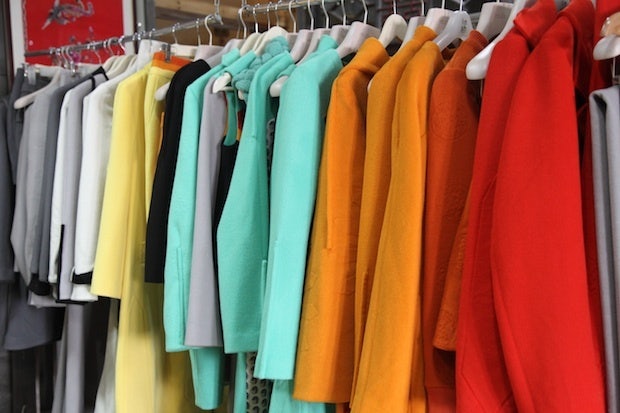
Helen Lee's Fall/Winter 2013 collection. (Erica Ji)
What are your suggestions as a successful independent designer to emerging young designers who wish to found their own brands?#
Everyone starts out differently. If starting out with no funds like me, they need to hold onto it, have a clear vision, and move forward step by step. They should accumulate everything from zero and should never lose their startup passion. Besides, entrepreneurship is bound to be difficult in many aspects; for example, being turned down by factories because of low quantity, or being unable to find the desired materials. They need to follow their instincts; if you have doubts in what you do, don’t do it. Only do what you think is worth doing, because your heart does not lie. I know many fashion designers desire to make it overnight through shortcuts because they have neither funds nor resources. Such shortcuts could be sensational reports and impractical public relations. Those can put you under a lot of unbearable pressure, since you haven’t laid a firm foundation. For those who don’t have to worry about funds, they should operate rationally and proceed one step at a time. Every designer starts out differently, so each should develop his/her own plans based on his/her unique situation. The bottom line is: as a designer, what do you what?
Helen Lee#
has collaborated with Dulux and a few other brands. How do you#
decide whom to collaborate with?#
It's the same as selecting an investor. Recently, we collaborated with Dulux on a project about color interpretation. What does a paint company have to do with fashion design? After I received their invitation and read their philosophy, I quite agreed with their ideas, so we collaborated. To put it simply, I would not collaborate with other companies unless our philosophies agreed. I don’t want to make my brand a tool for others to use for attaining publicity; instead, I want it to really touch customers. I know it is important to maintain public relations, but I do not want to collaborate just to gain a spot in the limelight.
Could you talk about Helen Lee’s upcoming collaboration with Disney?#
This year, Disney is celebrating its 90th anniversary. I was invited to collaborate by them, and have been communicating with them for more than a year now. We are debuting the collection in October at the upcoming Shanghai Fashion Week. This is a very interesting collaboration, since it is challenging for me to incorporate Disney’s cartoon patterns into Helen Lee’s stylish, charming, urban female image. I am very honored and happy to collaborate with an international brand like Disney on their 90th anniversary. They actually contacted me many times, and after reading their documents, I believed our philosophies agreed. We conceived this collection as a result, which is comprised of authorized Disney cartoon images and our design.
Check out more photos below from Helen Lee's Fall/Winter 2013 collection. (All images by Erica Ji)
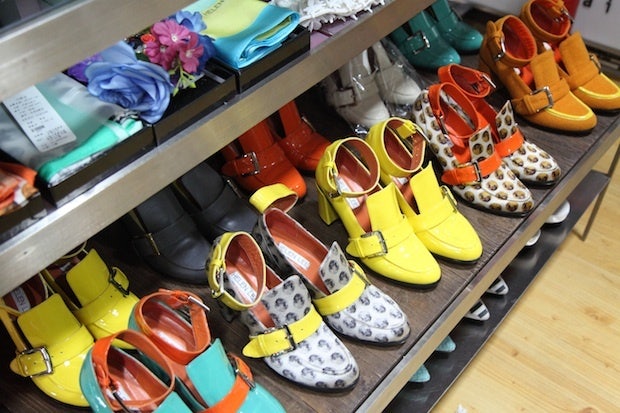
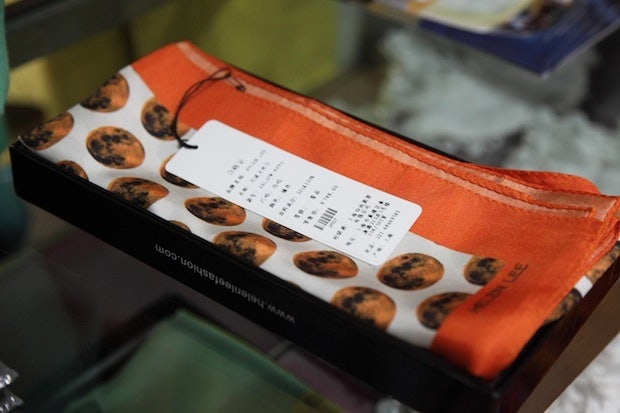
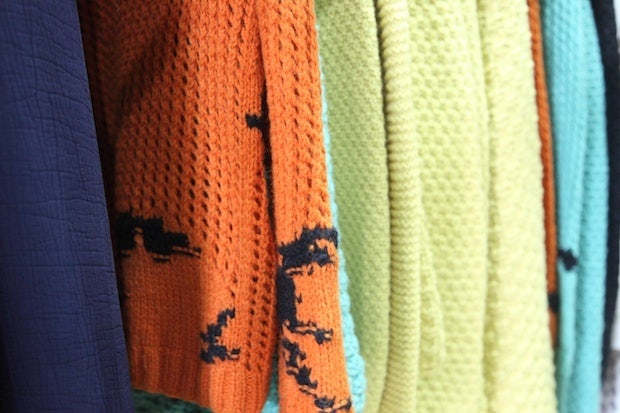
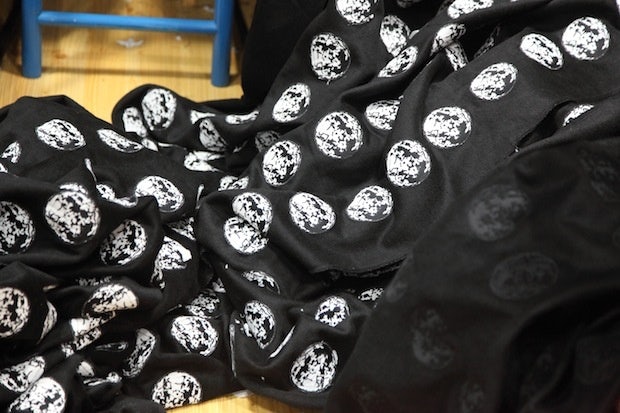
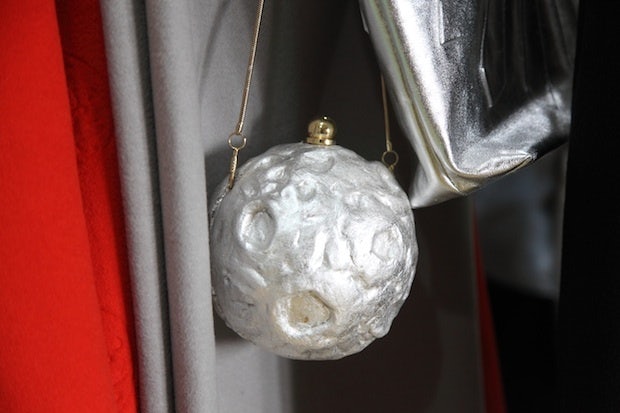
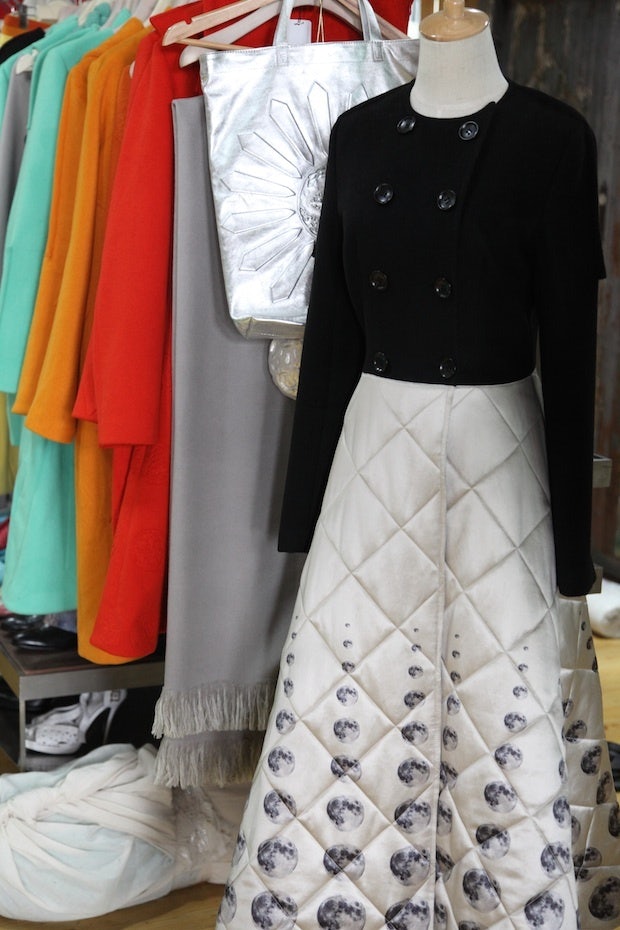
This article originally appeared in Chinese. Translated by Jasmine Lu.